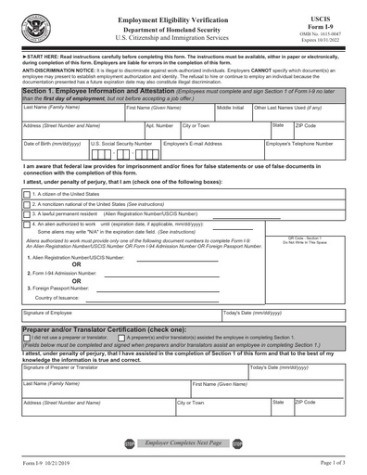4 7: Gains and Losses on Disposal of Assets Business LibreTexts

All the costs are deducted before the owner receives the final proceeds from the sale of the house. A higher selling price does not always result in higher net proceeds, since too many transaction costs and hidden expenses may reduce the net proceeds. Net proceeds are the final consideration that the asset owner/seller receives after deducting all costs and expenses incurred in the transaction. When disposing of a house, the first cost that is deducted from the cash received is the success fee.

Using the preceding examples, we will subtract the accumulated depreciation of $15,000 from the asset’s original cost of $50,000. Then, subtracting this $35,000 book value from the asset’s sale price of $40,000 will give us $5,000, which represents a $5,000 gain on the sale. If the disposal of fixed assets results in a gain or loss, we credit Gain on Sale of Fixed Assets or debit Loss on Sale of Fixed Assets. The gain or loss is the difference between the sales price of the assets less the book value of the fixed asset. Book value is the original cost of the asset less accumulated depreciation.
Gains
If the equipment is sold on January 31, Onyx Group of companies must record January’s depreciation. For nominal accounts, you credit the account if the company records income or gain and debit the account if the company records expense or loss. Therefore, you make a gain or loss on sale of asset journal entry to record a gain or loss. A debit entry increases a loss account, whereas a credit entry increases a gain account. According to the debit and credit rules for nominal accounts, credit the account if the business records income or gain and debit the account if the business records expense or loss. Therefore, in order to make the gain on sale of equipment journal entry, you will credit the ‘gain on sale or gain on disposal’ account in the same journal entry by the amount of the gain.
Because of this, you will find that one or more accumulated depreciation balances from the Asset Master records do not reconcile with the General Ledger. You can, however, use the balance in the Gain/Loss account as a reconciling amount for accumulated depreciation if you do not want to make a reclassification journal entry. The actual loss of $2,000.00 will be reflected in the gain/loss account balance. The actual loss of $2,000.00 will then be reflected in the gain/loss account balance. The other costs incurred include closing date obligations such as deferred taxes and outstanding debt on the property.
List of Fixed Assets in Accounting
In order to obtain the capital gains or losses on assets, you must have the basis amount, which is the amount paid to acquire the asset. As you no longer have the asset, you’ll need to remove its value from your balance sheet. The cost of any write off or any profit or loss you make cash capex definition from a sale is recorded on your profit and loss. This means that the assets may be sold at the current value, or more/less than the current value. When the assets are sold for more than their written down value, the profits arising from it will be treated as a gain for the company.
- In turn, the cost of the fixed asset being disposed of is transferred to this account.
- In others words, it is the method to allocate the cost of an asset over its useful life.
- This type of asset has a useful life of more than one accounting period (usually many years) and must be valued at the end of each accounting period.
- In Example 5, the system ignores the disposal price for the disposal posting even though the effect of the disposal price on gain/loss value is displayed on the screen.
Accumulated depreciation is a contra-asset account and as such would decrease by a debit entry and increase by a credit entry. For example, assume you recorded $15,000 in depreciation on the asset while you owned it, you will debit accumulated depreciation by $15,000. The whole concept of accounting for asset sales or disposals is to reverse both the recorded cost of the asset and in the case of a fixed asset- the corresponding amount of accumulated depreciation. When all accumulated depreciation and any accumulated impairment charges are subtracted from the original purchase price of the asset, the result is the carrying value of the asset.
Video: What Are Fixed Assets?
To illustrate the journal entries, let’s assume that we have a fixed asset with an original cost of $50,000 and accumulated depreciation of $30,000 as of the beginning of the year. The fixed asset has no salvage value and it has a useful life of five years. A negative depreciation adjustment displays as a negative value in the
Depr Adj field. A negative value will decrease (credit) the depreciation expense account(s) and decrease (debit) the accumulated depreciation account when the depreciation adjustment is posted.
Hence, the amount transferred to the disposal of fixed assets account is the accumulated depreciation at the end of the previous accounting period. Gains, on the other hand, denote income not earned through the company’s operating activities, but on the sale of assets. Expanding upon the previous example, Mike’s Computers has decided to sell a warehouse it owns. The warehouse is listed under the long-term assets account Property, Plant, and Equipment (PP&E) at the historical cost of $100,000. On the balance sheet, $100,000 will be subtracted from PP&E to write off the asset, while a gain of $50,000 will be reported on the income statement after taxes.
Sale of assets journal entry examples
We want to completely eliminate it from the accounting records, so we credit the asset account for $10,000, debit the accumulated depreciation account for $8,000, and debit the disposal account for $2,000 (which is a loss). Hence, when the company makes profits by selling the assets, a sale of assets journal entry in the name of ‘Gain on sale of assets‘ is to be booked and the assets which are sold are to be omitted from the ‘Fixed Assets account’. On the other hand, when the company incurs a loss by selling the assets, a ‘loss on sale of asset’ journal entry is to be booked.
- The warehouse is listed under the long-term assets account Property, Plant, and Equipment (PP&E) at the historical cost of $100,000.
- In order to calculate the gain or loss on the sale of assets, we, first of all, subtract the asset’s accumulated depreciation from its original cost and then subtract the resulting amount from the asset’s sale price.
- This entry is different from revenue because it results from transactions that are outside the business’s core operations whereas revenue results from the transactions related to the sale of goods or services of a business.
- Also, the disposal of fixed assets account is credited with the agreed value of the item.
- The articles and research support materials available on this site are educational and are not intended to be investment or tax advice.
In turn, the cost of the fixed asset being disposed of is transferred to this account. Using the preceding examples, we will subtract the accumulated depreciation of $15,000 from the machinery’s original cost of $50,000. Then, subtracting this $35,000 book value from the machinery’s sale price of $40,000 will give us $5,000, which represents a $5,000 gain on the sale of the machinery. However, if there was a loss from the sale of the machinery, it will give us minus $5,000.
Can a Sole Proprietor Sell Capital Assets?
Since the annual depreciation amount is $1,200, the asset depreciates at a rate of $100 a month, for a total of $300. A loss results from the disposal of a fixed asset if the cash or trade-in allowance received is less than the book value of the asset. The company also experiences a loss if a fixed asset that still has a book value is discarded and nothing is received in return. In order to know the asset’s book value at the time of the sale, the depreciation expense for the asset must be recorded right up to the date that the asset is sold. Fixed Assets are not revalued unless there has been a significant change in value shortly before they are closed.
Treasury and IRS Issue Proposed Regulations for Tax Reporting … – JD Supra
Treasury and IRS Issue Proposed Regulations for Tax Reporting ….
Posted: Fri, 01 Sep 2023 22:13:48 GMT [source]
You debit Accumulated Depreciation for $2,500; credit $7,000 to Fixed Assets; credit $1,000 to Gain on Sale of Assets; and debit $5,500 to Cash. Your accounts now include the gain and the cash payment, but the carrying costs are wiped out. When a fixed asset is no longer used it must be removed from the balance sheet. The removal will often result in a gain or loss to be recognized on the income statement. If the journal entries are incorrect, it may affect the accuracy of the balance sheet and income statement.
Income from the sale of property, equipment, securities, etc. all are considered items that would fall under the category of gains on the income statement. Accounting for assets is tricky, Accounting Tools warns, because your profit on the sale may not be as simple as sales price minus purchase price. For example, suppose you purchase a $7,000 piece of equipment for your company’s biochemistry lab and sell it for $5,500 down the road. What you subtract from the sale price isn’t the purchase price but the asset’s carrying amount. You report gains on the sale of assets as non-operating income on your income statement. To measure the gain, subtract the value of the asset in your ledgers from the sale price.
